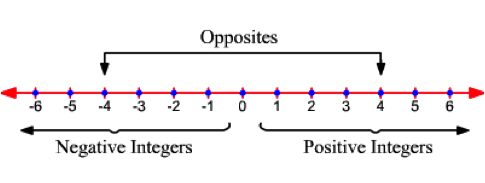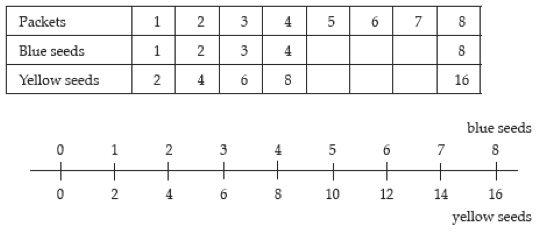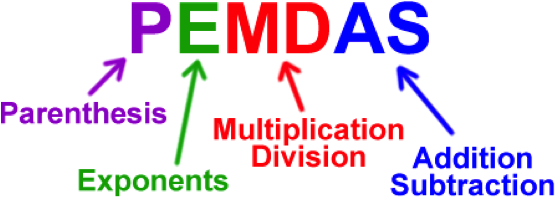What Do 5th Graders Learn In Math
There can exist quite a jump in math noesis from fifth grade to sixth grade, and I like to retrieve of information technology as crossing a span. The more we can connect the span, the better our children will experience about themselves in eye school. 5th grade is a culmination of all that students take learned at the elementary level, while sixth grade can be seen every bit the starting point for middle school. And no matter how your child'south center school works, there is a distinct connection between these grades. The more comfortable children are with these concepts by the finish of sixth form, the more than they'll exist equipt for middle schoolhouse.
Hither are 4 of the major math concepts your kid will cover in fifth and 6th course:
one. Number System. In fifth form, students focus on adding, subtracting, multiplying, and dividing whole numbers, fractions, and decimals. Your child volition become fluent with computing these types of numbers and understanding the relationship between them. Students should also be able to use these numbers in real-world scenarios. In sixth grade, kids go along their understanding of these numbers, and are as well introduced to negative numbers. They will begin to identify rational numbers and integers on a number line also as compare them. Using models volition profoundly better your child'due south understanding of these concepts.
Encourage your kid to:
- Recognize and summate using fractions and decimals in the real world. For case, accept your child figure out the disbelieve from a auction; the amount of tax while shopping; find the tip of a pecker, or explicate sports stats.
- Utilize fraction bars to compute (adding, subtracting, multiplying, or dividing).

Image courtesy: LearnZillion
- Find examples of positive and negative numbers in the real world (temperature, altitude, sea-level, etc.) and apply models to assistance understand the relationship betwixt them.

Image courtesy: The positive impact of Math
2. Ratios. Students will use their knowledge of fractions and decimals in fifth course to reason ratio and rate problems in 6th grade. Kids will need to connect their understanding of multiplication and partitioning with real-globe problems using ratios. They will use models (diagrams, table, double number lines, etc.) to help them make these connections and solve unit rate issues. Students will likewise learn about percents and how they friction match up with fractions and decimals.
Encourage your child to:
- Detect examples of ratios in the existent world. For example, "The ratio of wings to beaks in the birdhouse at the zoo was ii:1, because for every 2 wings there was ane neb."
- Utilize models to help understand ratio and charge per unit problems:

Image courtesy: Mr. Pratt's sixth Class Class

Image courtesy: nzmaths.
- Create existent-globe issues using ratio agreement. For example, "This recipe has a ratio of 3 cups of flour to 4 cups of sugar, so there is iii/4 cup of flour for each cup of sugar."
3. Expressions & Equations. Students start to distinguish the departure between an expression and an equation. They apply variables to correspond an unknown number in both expressions and equations. Fifth and 6th graders follow the appropriate order of operations to solve bug, including parentheses and exponents. Your children are beginning to read, interpret, and write expressions and equations, also as solving i-variable equations.
Encourage your child to:
- Distinguish between an expression and an equation, and understand the meaning of the equal sign:
Expression: 4y + 2
Equation: 4y + 2 = xiv
- Solve problems using the acronym of PEMDAS:

Image courtesy: coolmath.com
- Read and write expression with ease: Subtract n from 8" every bit 8 - n.
- Create and solve real-earth bug using variables. For example, "It costs $100 to rent the skating rink plus $5 per person. Write an expression to find the cost for whatsoever number (due north) of people. What is the cost for 25 people? Answer: 100 + 5n; so for 25 people = 100 + 5(25) = 225."
4. Geometry:Students continue classifying figures into categories based on their properties. Your child will learn to find the area of triangles and some quadrilaterals. They will learn to calculate the book of 3-D figures using whole numbers and partial edges. Students begin to utilize represent real-world issues by graphing points on the coordinate plane.
Encourage your kid to:
- Understand the difference betwixt finding area of a 2-D effigy versus finding the volume of a three-D effigy. Indicate out unlike objects and ask if your kid would find the surface area or book of that effigy. For example,"Would y'all find the expanse oro volume of that backyard?" Or, "Would you find the area of book of that swimming pool?"
- Utilize appropriate vocabulary when describing different polygons and geometric properties. For instance,"What are parallel lines?" Answer: "Two lines on a plane that never meet. They are always the aforementioned distance apart."
- Employ their third class learning on understanding how to discover the area of a rectangle or to observe the read of a triangle:

Prototype courtesy: The University of Georgia Section of Math Educational activity
- Develop an agreement of the coordinate plane and begin to plot points using real-world scenarios (using graph paper). For instance,"On a map, the library is located at (-2, 2), the metropolis hall edifice is located at (0,2), and the loftier school is located at (0,0). Represent the locations as points on a coordinate grid with a unit of 1 mile."
Don't worry if these concepts feel a little intimidating at get-go. Remember, you haven't been taking yearly math classes that build on each other similar your children have. (At showtime, it may even feel like your chidren sympathise information technology better than yous practise!)
Just that's the betoken of our "Major Math Concepts" blog series. We want you endowed with understanding these math concepts as well. You may get a spring get-go on your kids' learning, you may keep pace with them, merely either will assistance you connect more with your kid on what is often a challenging field of study.
Have any questions about these concepts or whatever other questions on your child'southward math? Submit them to Jennifer here so she can consider answering in an upcoming blog. Or share them with us on the Scholastic Parents Facebook Page.
Featured photograph credit:© Oktay Ortakcioglu/iStockphoto
Source: https://www.scholastic.com/parents/school-success/learning-toolkit-blog/4-major-math-concepts-your-kids-learn-grades-5-6.html#:~:text=In%20fifth%20grade%2C%20students%20focus,numbers%20in%20real%2Dworld%20scenarios.
Posted by: bennettwasat1989.blogspot.com


0 Response to "What Do 5th Graders Learn In Math"
Post a Comment